Richard King has labored with a few of the most interesting filmmakers in Hollywood, and has crafted soundtracks for a few of the most interesting movies ever made. It could be too exhaustive to element all of the sound work he’s completed in his profession, however his accolades embody 4 Academy Awards, for Peter Weir’s “Grasp and Commander: The Far Facet of the World”, and for his work with Christopher Nolan on the movies, “The Darkish Knight”, “Inception”, and “Dunkirk”. There are additionally many different awards and different nominations too prolonged to listing.
As a supervising sound editor, and sound designer, Richard’s work spans comedy, drama, and animated movies. Apart from Christopher Nolan and Peter Weir, he’s labored with administrators akin to Kathryn Bigalow, Nicholas Roeg, Paul Thomas Anderson, M. Night time Shyamalan, Robert Altman, William Friedkin, Steven Spielberg – the listing goes on and on. Not one to relaxation on his spectacular laurels, moreover “Oppenheimer”, he’s additionally chargeable for the sound for Bradley Cooper’s “Maestro”, and the upcoming Denis Villeneuve’s, “Dune: Half Two”!
Richard took time from his busy schedule to talk with me particularly about his spectacular sound design work on “Oppenheimer“.
Woody Woodhall: The dynamics of the sound in “Oppenheimer” are about as extensive as nature permits. It goes from the large to the microscopic. From the biggest explosion on earth versus the sound of quantum waves and particles and black holes. How did you strategy the sound design for quantum particle montages?
Richard King: He [Christopher Nolan] did examine the biggest objects within the universe all the way down to the smallest, which is absolutely fascinating, I believe.
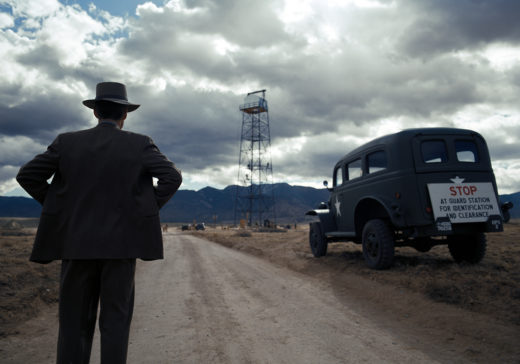
The thought with the quantum particle sequences actually was to point out the latent energy in them. These could possibly be planets interacting or they could possibly be quantum particles interacting. You realize, the Trinity check, the 20 kiloton detonation, was attributable to a sphere of metallic concerning the measurement of a softball. Its not a lot stuff, bodily mass of stuff, that made that big explosion. In order that signifies that each molecule and atom in that sphere of plutonium contained an infinite quantity of latent energy. My aim was all the time to make these appear to be these are extremely highly effective forces at work, that is what they must work with as physicists, and that is what they’ve to use to create this weapon.
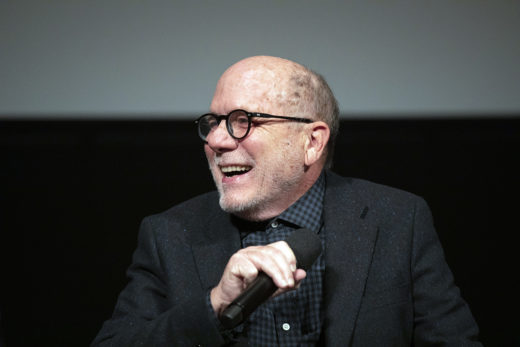
(picture: Alex J. Berliner/ABImages)
WW: I attended an occasion with you, Christopher, and all the craft heads from the movie. It was fascinating listening to that, to no matter extent attainable, particularly for the visible results workforce, Christopher needed every part to be created virtually. Does he maintain your audio creation and design to the identical commonplace when it comes to that?
RK: Properly, it’s not an edict, and also you don’t need to restrict your self both, there are occasions when there’s a must create sounds utilizing an oscillator or one thing.
I used to be working from the unbelievable photos that Chris captured along with his visible results workforce. They did some actually cool stuff, all sensible, all photographically, with none CGI or visible results. So we targeted on utilizing pure sounds, pure recorded sounds, relatively than overuse of a synthesizer or something to create these sounds. I used to be actually impressed by the photographs that they got here up with.
I really feel just like the viewers can scent actuality, can sense when one thing’s not recognizable or one thing that they might think about listening to in the actual world, in a recognizable world that they know. I believe it has a refined impact of bringing the viewers into the movie in the event that they’re not questioning what they’re listening to as being actual. It’s a nice line and it’s a tough factor to explain, however I believe that to droop their disbelief, I believe they must be satisfied and really feel just like the characters they’re watching are working inside a well-known, identified world.
Now, after all, there are exceptions to that, and there actually aren’t any guidelines of filmmaking. However on the whole, I believe for a story movie, it’s very useful. I really feel, as an viewers member, as a moviegoer, that I’m in a extra comfy, acquainted world, figuring out extra with the plight of the characters, if what I’m listening to is drawing me into that world. I believe that it simply provides a dose of actuality that appears to stay to the display screen.
There are exceptions after all to that non-rule, however that was the strategy, definitely for Oppenheimer. One of many nice moments of pressure is after the detonation and we’re ready for the blast – all that actual world stuff.
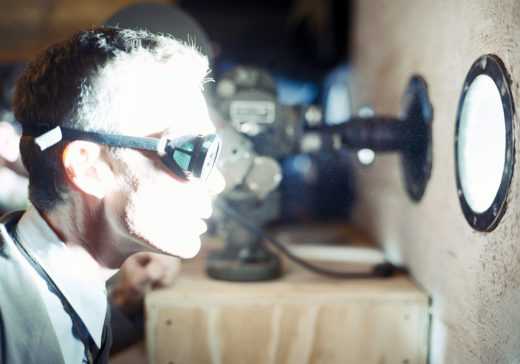
WW: Are you able to discuss creating and designing that sequence with sound?
RK: Chris and Jennifer Lame, the editor, after all designed the timing and the sequence of occasions. Clearly, it’s true to actuality that the shock wave took one thing like 30 or 40 seconds to succeed in the bunker. However actually curiously, it additionally works extremely effectively dramatically as a result of the viewers – it’s counterintuitive, the viewers expects to see the flash and listen to the bang.
For a second they’re form of postpone, they’re on this subjective realm, utterly with the scientists, with the observers, watching in awe, this unbelievable imaginative and prescient in entrance of them. And realizing it labored, that this factor they’ve been engaged on for years from equations on a chalkboard turned out to be correct, and this occasion occurred – I believe it offers the viewers a little bit of time to form of digest that, and to learn the shock and awe on their faces.
The shockwave hitting is kind of just like the conclusion of that, of that breathless second of awe. Then actuality crashes again, and that’s the purpose at which everybody realizes, effectively, we had been all nonetheless alive. We didn’t destroy the earth, and it labored. They’ll lastly breathe a giant sigh of aid. It’s a cool method that the sequence is designed. We deliberately delayed the sound from the picture a bit, as was acceptable for the gap they had been from the glass, simply to cue the viewers in that we had been doing it this manner. We had been being true to physics and to the velocity of sound, the velocity of sunshine.
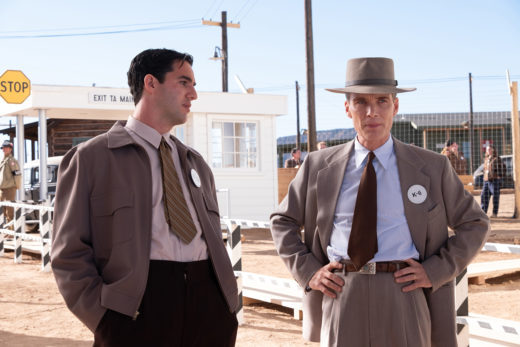
WW: There’s a recurring sound motif of stomping and marching. It’s foreshadowed early on, after which comes again a number of instances, after which finally the supply is revealed. Was every second of that part of the script, or was that one thing that was developed in put up, or each?
RK: A few of them had been a part of the script and we ended up including some extra cases of it. As an example, on the very starting of the movie, after we’re seeing the close-up pictures of explosions. We added a pair, however a few of them had been within the script as form of a foreboding of that scene. It permits us a glimpse into Oppenheimer’s thoughts and his emotions. When he’s below stress, throughout one of many nice committee hearings, or when he’s pondering nuclear holocaust – it’s a very efficient sound since you don’t know what it’s till you see it. You’re proper, it does sound prefer it could possibly be marching.
WW: As an viewers member, I used to be considering, is that this a military coming or one thing like that?
RK: It’s an ominous sound.
WW: Sure. And the payoff is so nice in that scene when it lastly comes and the sound is then stripped away. It’s a kind of introspective moments of the horror of what he needed to carry in his coronary heart, I assume, for the remainder of his life.
RK: Proper, precisely, sure.
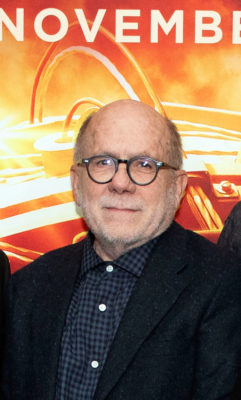
WW: Let’s take a second and talk about your background. Plenty of us come to sound as musicians or by dwell music mixing, that kind of factor. Are you a musician or did you begin reducing image first after which transfer into sound? Or was the sound work proper from the start? How did that begin for you?
RK: I needed to be a filmmaker. I grew up making super-8 movies with my mates. I went to nice artwork college and moved to New York, probably not realizing what I needed to do in movie. I acquired a bit little bit of a style of every part.
I used to be fortunate sufficient to get a job for a man that did documentaries within the industrials, and he shot them, and he minimize them, and we took them to a mixing stage and combined them. So, I acquired to see the total run of the filmmaking course of from capturing by ending. I actually loved the editorial course of, form of like a puzzle, you realize, placing the items collectively to take advantage of sense. He would very often let me minimize a scene or two and say, you are able to do sound on this sequence and simply went off and had a three-hour lunch. I form of had the golden alternative of instructing myself tips on how to do all this. After a short 30-minute demonstration I discovered the sound a part of it to be simply extremely open and liberating, I didn’t have the identical limitations of the footage that I used to be introduced with [when cutting picture].
I might do just about something that I assumed was proper. One of many first initiatives he gave me was a documentary concerning the constructing of a dam, a big hydroelectric dam in Brazil. It was all MOS, it was all shot with out sound. So, I began including sound results to it and simply discovered the expertise actually satisfying, form of magical, in that this two-dimensional picture grew to become three-dimensional. I discovered that very thrilling and continued alongside, form of the twin sound/image path for some time as a result of I couldn’t be choosy about what sort of work I took. I ended up in Los Angeles as an image assistant on location for movie, however shortly segued into the sound a part of the method. I believe that was the final image I used to be in any method concerned, both as an image editor or an image assistant on, and really shortly segued to function sound.
WW: So, the filmmakers that you simply’ve labored with, their works are typically extra cerebral or kind of metaphysical. The movies are extra of an introspective expertise relatively than many movies that are rather more literal, for lack of a greater clarification. Christopher Nolan is absolutely one of many few filmmakers, who can contact on and envision these sorts of concepts filmically. I’m wondering the way you, if you’re concerned in engaged on these extra cerebral sorts of scenes, I’m desirous about the Tessaract in “Interstellar” as an illustration, how you’re employed by these challenges.
RK: Scenes just like the one you confer with are actually rooted in a foundation of precise science and physics. It’s arcane physics and its very theoretical physics, but it surely does have a foundation in science. I got here at that by the science perspective and thru the perceptual perspective, by attempting to think about, then attempting to create an infinite distinction within the sensation of being in house, in ambiance. Making it tremendous clear that the vacuum of house is uninhabitable. We made a transparent distinction between after we’re contained in the ship and outdoors the ship. That was in service of exhibiting how out of our ingredient people are in house.
So, I got here at it from the theoretical scientific route, and likewise from the — “what would it not really feel wish to be in these conditions” form of perspective, exhibiting that these individuals are tied to their atmospheric surroundings. They must be in that exact place, with a sure temperature, and a sure weight of gravity, and a sure degree of chemical substances within the air to breathe. What would it not really feel wish to be on the small planet that’s circling the black gap, the place gravity is far higher?
On the whole, I have a tendency to return at movies from the viewers’s perspective of — what would I really feel like if I used to be in that state of affairs with these characters? What’s the most instant method to make use of sound to strengthen the viewers’s expertise?
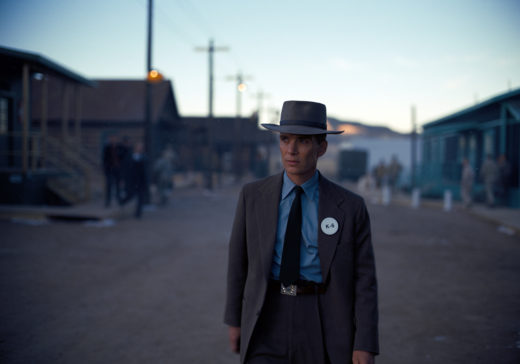
WW: Are you able to discuss how the sound design developed in “Oppenheimer” all through the put up course of? Had been you presenting Christopher the alternatives together with your sound design work as he was making image enhancing selections?
RK: It went right through to the dub, and thru the dub. We had been continually modifying as we had been working in the direction of the combo, attempting various things, continually exploring, realizing that there have been all the time three or 4 or 5 issues on the again burner that we knew we might do higher, and we had been nonetheless form of engaged on them at the back of our minds, after which all through the course of the seven or eight week combine.
Chris was there each single day. It was Jen Lame, the image editor, Chris, myself, and the mixers and music editor, and we had been simply targeted on — tips on how to make the movie higher. It positively developed all the best way as much as the very, very, finish, in sharpening concepts, and in attempting to do various things. Perhaps they labored and possibly they didn’t, however yeah, there wasn’t, there was by no means any form of blueprint in place. It was all the time — what can we do with this?
And it’s a enjoyable place to be. A enjoyable, artistic place to be.
Woody Woodhall, CAS is a Supervising Sound Editor and Rerecording Mixer and Founding father of Los Angeles Put up Manufacturing Group. You’ll be able to observe him on Bluesky at wwsm.bsky.social






